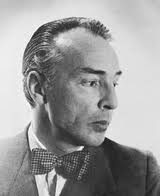This review appears in the March edition of ABR
Balanchine and the Lost Muse: Revolution and the Making of a Choreographer by Elizabeth Kendall, Oxford University Press, $41.95
George Balanchine’s name is synonymous with ballet. We know him as a dancer in the post-revolutionary Soviet Union before his flight to the West in the early 1920s. After joining Diaghilev’s Ballets Russes as an innovative choreographer, Balanchine soon realised that moving to the United States would enable him to fulfil his creativity and ambition. In 1934 he founded the New York City Ballet, remaining its prime choreographer and ballet master until his death in 1983. He combined the classical aesthetic he learned at St Petersburg’s rigorous Imperial Ballet School with daring modernism. Collaborations with composers such as Stravinsky ensured that his ballets would remain icons of contemporary dance.
Much has been written about Balanchine, but less is known of his fellow students, in particular Lidia (Lidochka) Ivanova, a talented young dancer who was killed in a boating accident at the age of twenty. Balanchine had many muses during his career. A serial lover of ballerinas, including his first wife, Tamara Geva, his ballets regularly featured or were choreographed for his current love interest. Elizabeth Kendall contends that Balanchine’s original muse was Ivanova herself. Her book is an attempt to prove this theory, as well as a history of classical dance from the last years of Imperial Russia to the turbulent post-revolutionary years.
Kendall has impeccable credentials. A professor of literary studies at the New School in the United States, she has written regularly for international ballet journals. She interviewed Balanchine two years before his death. He was seventy-seven, white-haired, straight-backed, and whippet-thin, with a twinkle in his eye, and a penchant for bright young women. They flirted and talked about food as well as dance.
What this obviously ignited in Kendall was a passion for discovering more about such challenging times in dance’s history. But nowhere in that interview, or in any other, did Balanchine mention his ‘lost muse’, and that’s the problem. Much of this book is pure conjecture on Kendall’s part, a desire to find an ur-source for Balanchine’s genius, cobbling together research, excerpts from memoirs, old photographs, and letters to substantiate her claim. The result may be romantically satisfying, but it lacks the hard evidence needed for a compelling case.
This is what we do know. Ivanova was the daughter of an army officer who had risen through the ranks. Obsessed with the arts, he enrolled her in the Imperial Ballet School at the age of nine. By the time Lidia was fourteen she was well on the way to becoming a ballet star. Although boys and girls took lessons separately, she quickly became friends with the then Georges Balanchivadze. Both had come from humble origins. Balanchine’s parents won a lottery and rose swiftly up the social scale, only to see their money disappear in bad investments. A place at the prestigious Imperial Ballet School for their son enabled them to win back some lost face. The training was spartan, with exercises designed to discipline the spirit as well as the body.
However tough the students’ lives were before 1917, after the revolution uncertainty reigned. Amid the chaos of a society in total reconstruction with ensuing fear and famine, what place would the rarefied art of ballet have in this new proletariat world? In one telling passage, Kendall relates that it took the influence of the school’s Red Army-endorsed new director, Oblakov, to ensure the now-renamed Petrograd State Theatre Ballet School received sufficient winter fuel so that the young dancers wouldn’t freeze.
What followed was a complete rethink of ballet’s role and purpose. The annual presentations to the imperial family were replaced by performances at factories and to the bureaucrats forging Lenin’s New Economic Policy. Revolutionary zeal replaced pomp and circumstance. It was during this period that Balanchine choreographed his first ballets. None, however, was inspired by, or even featured, Ivanova.
Balanchine definitely recognised a kindred spark in Ivanova. They were often paired in ballets. An account of their dancing in The Magic Flute in 1920 mentions Ivanova’s dark good looks, ‘sunlit smile’, exuberance, and preposterously high leaps. Both appeared ‘not so much to dance the steps as to live the ballet, sincerely and spontaneously’. They were young stars in the making, daring and optimistic. But four days before going on tour, Ivanova drowned.
Praised for her fearlessness, her ability to create ‘real, living creatures’, and her intuitive timing, Ivanova was also a risk-taker, especially in her private life. Her death gave rise to several conspiracy theories. Was her death a terrible accident? Was she disposed of by a jealous rival or murdered because of her associations with the secret police? (Today’s shenanigans at the Bolshoi pale in comparison.)
Kendall links Ivanova’s premature death with the leitmotif of dead young women who regularly feature in Balanchine’s ballets, asserting that ‘Lidochka was simply … the realest in a long line of balletic Deaths and Maidens’. This is simply not true. Balanchine did feature corpses in his ballets, but many of them were male, not female. And a dead maiden is the heroine of his first ballet, Night, written before Ivanova’s death.
Georges and Lidia were colleagues, not lovers, and, though he was clearly affected by her death, Balanchine’s course was set. This is a rich account of the socio-political framework and cultural beginnings of the early days of the Soviet Union. But by romanticising Ivanova’s role in Balanchine’s life, Kendall does her narrative a grave disservice.



March 14, 2014 at 2:25 am
Very interesting, Dina. The ballet has always fascinated me because there seems to be a lot of ‘drama’ going on behind the scenes.
March 14, 2014 at 3:04 am
Thank you – I agree, what a ballet this story would make!